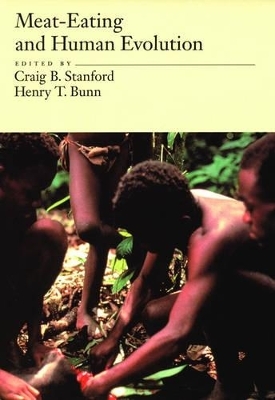
Meat-Eating and Human Evolution
Oxford University Press Inc (Verlag)
978-0-19-513139-0 (ISBN)
When, why, and how early humans began to eat meat are three of the most fundamental unresolved questions in the study of human origins. Before 2.5 million years ago the presence and importance of meat in the hominid diet is unkown. After stone tools appear in the fossil record it seems clear that meat was eaten in increasing quantities, but whether it was obtained through hunting or scavenging remains a topic of intense debate. This book takes a novel and strongly interdisciplinary approach to the role of meat in the early hominid diet, inviting well-known researchers who study the human fossil record, modern hunter-gatherers, and nonhuman primates to contribute chapters to a volume that integrates these three perspectives. Stanford's research has been on the ecology of hunting by wild chimpanzees. Bunn is an archaeologist who has worked on both the fossil record and modern foraging people. This will be a reconsideration of the role of hunting, scavening, and the uses of meat in light of recent data and modern evolutionary theory. There is currently no other book, nor has there ever been, that occupies the niche this book will create for itself.
Preface
Forword
Introduction
I MEAT-EATING AND THE FOSSIL RECORD
1: Deconstructing the Serengeti
2: Taphonomy of the Swartkrans hominid postcrania and its bearing on issues of meat-eating and fire management
3: Neanderthal hunting and meat-processing in the Near East: evidence from Kebara Cave (Israel)
4: Modeling the edible landscape
II LIVING NONHUMAN ANALOGS FOR MEAT-EATING
5: The dog-eat-dog world of carnivores: a review of past and present carnivore community dynamics
6: Meat and the early human diet: insights from Neotropical primate studies
7: The other faunivory: primate insectivory and early human diet
8: Meat-eating by the fourth African ape
III MODERN HUMAN FORAGERS
9: Hunting, power scavenging, and butchering
10: Is meat the hunter's property? Big game, ownership, and explanations of hunting and sharing
11: Specialized meat-eating in the Holocene: an archaeological case from the frigid tropics of high altitude Peru
12: Mutualistic Hunting
13: Intra-group resource transfers:comparative evidence, models, and implications for human evolution
14: The evolutionary consequences of increased carnivory in hominids
15: Neonate body size and hominid carnivory
CONCLUSIONS
| Erscheint lt. Verlag | 1.8.2001 |
|---|---|
| Reihe/Serie | Human Evolution Series |
| Zusatzinfo | 5 halftones, 67 line illustrations |
| Verlagsort | New York |
| Sprache | englisch |
| Maße | 234 x 156 mm |
| Gewicht | 712 g |
| Themenwelt | Geschichte ► Allgemeine Geschichte ► Vor- und Frühgeschichte |
| Naturwissenschaften ► Biologie ► Evolution | |
| Naturwissenschaften ► Biologie ► Humanbiologie | |
| Sozialwissenschaften ► Ethnologie | |
| Sozialwissenschaften ► Soziologie | |
| Technik ► Lebensmitteltechnologie | |
| ISBN-10 | 0-19-513139-8 / 0195131398 |
| ISBN-13 | 978-0-19-513139-0 / 9780195131390 |
| Zustand | Neuware |
| Haben Sie eine Frage zum Produkt? |
aus dem Bereich


